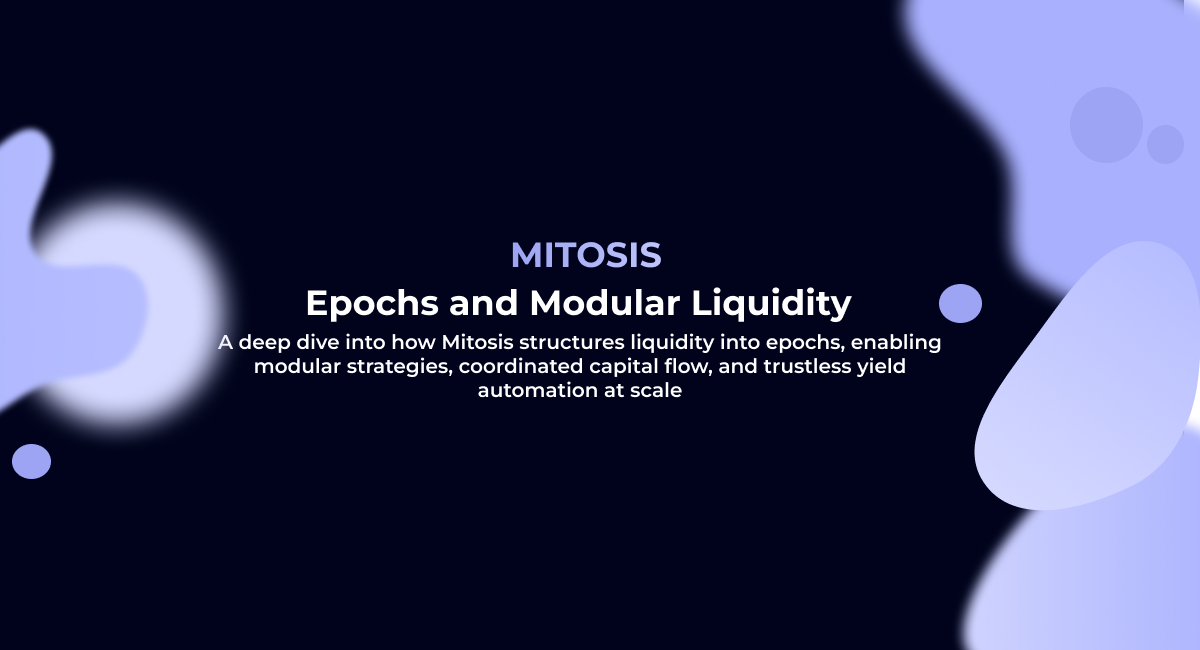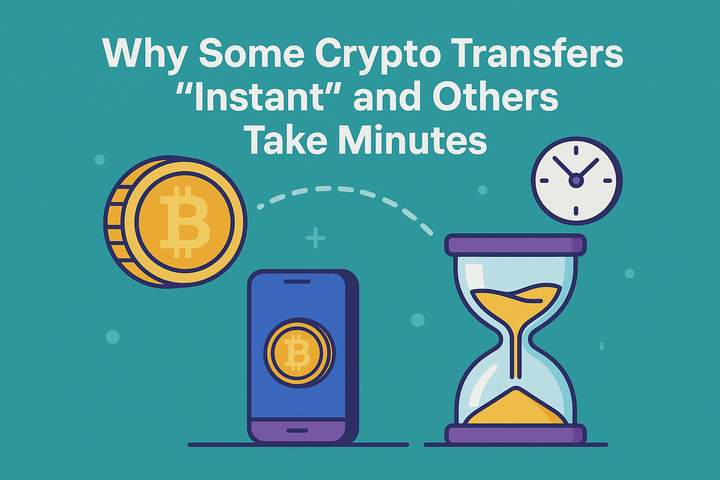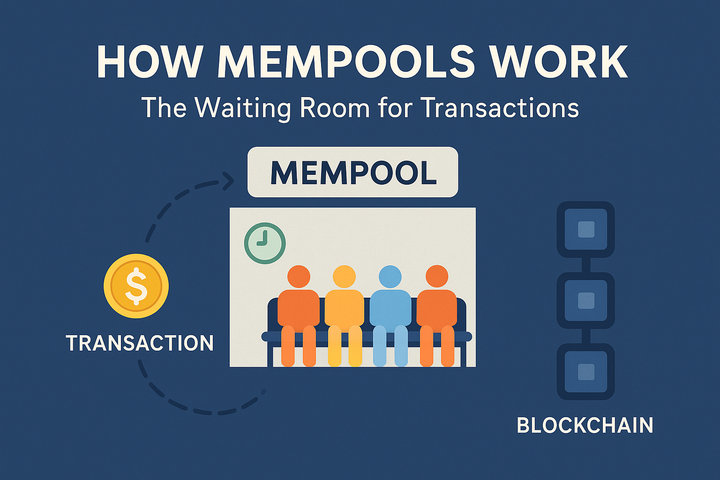⏳ Epochs in Mitosis: Modular Liquidity Redefined

How Mitosis leverages epoch-based architecture, cross-chain vaults, and DAO governance to reshape capital efficiency in DeFi
🚀 Introduction
Mitosis isn’t just another liquidity platform — it’s building a new foundation for DeFi, rooted in programmable liquidity. At the core of this innovation lies its epoch-based modular architecture, allowing liquidity to flow across chains with logic, transparency, and precision.
With each vault operating in self-contained epochs and governed by the community through the Mitosis DAO, users get access to structured, risk-adjusted strategies — while preserving full on-chain control.
🔗 What Is Mitosis?
🔗 Mitosis University
🔗 Matrix Vault Documentation
📆 What Are Epochs in Mitosis?
Epochs are time-bounded cycles within which vault strategies are executed. Each epoch ensures predictable liquidity flow, reporting, and strategy resets.
🔑 Key features of an epoch:
- Deposit window: Users can add assets before an epoch starts.
- Execution phase: Assets are locked and deployed into the vault’s strategy.
- Settlement phase: Yields are distributed, and users can withdraw, roll over, or reallocate.
🔗 Epoch Lifecycle Explained
🔗 Matrix Vault Mechanics
🧱 Why Modular Liquidity Matters
Most DeFi protocols lump all liquidity into shared pools, often creating inefficiencies and unpredictable behavior. Mitosis solves this with modular vaults, each tailored to a specific:
- Strategy type (e.g., delta-neutral, options, long/short)
- Duration and volatility profile
- Governance parameters and fee structure
This containerized architecture allows more granular control, better capital matching, and fine-tuned risk-adjusted returns.
🔗 EOL vs Matrix Liquidity
🔗 How Modular Liquidity Works
🔁 Strategy Execution Within Epochs
The use of epochs enables synchronized deployment of complex DeFi strategies, such as:
- Delta-neutral arbitrage (e.g. Theo Straddle Vault)
- Volatility-based options strategies
- Basis trades, yield curve plays, and directional bets
Thanks to predictable liquidity windows, vault managers can minimize slippage, optimize execution, and ensure fair performance reporting.
🔗 Theo Vault Recap
🔗 How Delta-Neutral Strategies Work
🔐 Transparency, Safety, and Auditability
Epoch-based vaults are deployed entirely on-chain, offering:
- Live TVL tracking
- Transparent trade execution
- Immutable proof of yield calculations
Unlike opaque fund managers or off-chain DAOs, Mitosis ensures 100% transparency via smart contracts — with open auditing and community oversight.
🔗 Smart Contract Audits
🔗 Vault Performance Explorer
🌉 Vanilla Assets & Cross-Chain Execution
Mitosis vaults use Vanilla Assets — 1:1 backed, chain-synchronized tokens like vUSDC, vETH, vBTC. These assets allow:
- Instant swaps across chains
- Vault participation from any supported network
- Composability across the entire Mitosis ecosystem
There’s no need for bridges or wrapped tokens — cross-chain execution is handled by internal accounting and synchronized ledgers.
🔗 What Are Vanilla Assets?
🔗 Cross-Chain Swaps Without Bridges
🔗 Security Architecture of Vanilla Assets
🔄 Rollovers, Withdrawals & Capital Control
At the end of each epoch, users can:
- Withdraw principal + yield
- Rollover automatically into the next epoch
- Move capital between strategies
This reduces gas overhead, improves retention, and gives users more control over capital reallocation with less friction.
🔗 Matrix Vault User Guide
🔗 Composability in Mitosis
🗳 DAO Governance of Strategy Parameters
Every vault is configured and governed by the Mitosis DAO, which decides on:
- Epoch durations
- Strategy approvals
- Deposit caps and fee structures
- Vault retirement and upgrades
This ensures vaults remain aligned with community goals and security standards — with open proposal processes and on-chain votes.
🔗 Mitosis Governance Overview
🔗 DAO Case Study: Morse DAO
📊 On-Chain Performance & Reporting
Each epoch concludes with an on-chain yield report that users can verify. Performance is measured objectively by the protocol — no manual declarations, no hidden adjustments.
- Viewable per epoch, per strategy
- Immutable and transparent
- Auditable by anyone at any time
🔗 Vault Performance Explorer
🔗 Proof-of-Performance System
🔮 The Future: Epoch-Based Yield Auctions
Mitosis plans to extend epoch logic even further by enabling:
- Yield matching auctions across vaults and strategies
- Dynamic capital routing based on real-time conditions
- Auto-scheduling of epochs to match external market timing
This is what fully programmable DeFi liquidity looks like — decentralized, automated, and capital-efficient at scale.
🔗 Mitosis Roadmap
🔗 Yield Matching Layer Explained
🧪 Final Thoughts
Epochs in Mitosis are more than just time blocks — they’re the building blocks of a transparent, modular, and DAO-driven DeFi infrastructure.
Combined with Vanilla Assets, cross-chain compatibility, and automated smart vaults, Mitosis is enabling next-generation liquidity tooling for both passive users and active DeFi strategists.
🔗 Start Exploring Vaults
🔗 Read More on Epoch Mechanics
🔗 Join the Mitosis Community on X



Comments ()